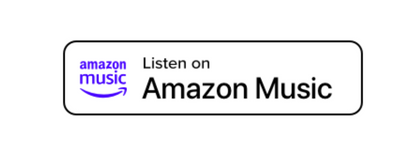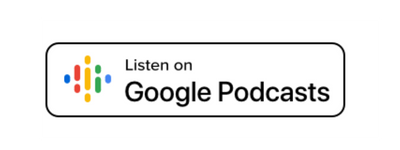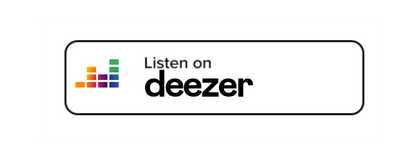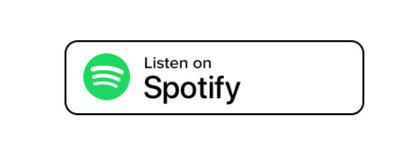The story of the product builder behind UiPath w/Param Kahlon
“With hyper-automation, all of us can now focus on the jobs that we are really hired for. As a Chief Product Officer, I’m focused on building creative and new products that can help the customers. However, a lot of time is spent on managerial tasks like updating HR reports. That’s where automation comes into play.”
The first time I built process automation was for building demos for our products. Every customer asks for a product demo to see the features before making any purchasing decision. Automating that repetitive task was an example of one of the first introductions to process automation. - Param KahlonEpisode Insights





Today’s guest — Param Kahlon,
Chief Product Officer at UiPath, Inc.
Automation Area — Intelligent Automation / Hyper Automation Platform
Listen to the full episode :
About the Episode
In today's episode, we have Param Kahlon, the Chief Product Officer at UiPath. Param has been shaping the roadmap of platforms and the products for many years, previously at Microsoft and SAP before joining UiPath.
As the chief product officer, now he shapes the adoption of the future of work technologies like RPA, Process Mining, Test Automation, Analytics, AI, and beyond. The work we do and the processes we interact with during our daily jobs now change based on the work that Param and his team and colleagues at UiPath do. He is a true master of automation.
Some questions we discussed:
How did your journey begin with process automation?
What led you to UiPath? What attracted you the most?
What is the future of work for you? Applying it to the life of a Chief Product Officer.
What are you most excited about the impact of hyper-automation?
As a CPO, you decide where the product is headed. What do you think is expecting us?
Why should you care?
Hear Param’s personal story on how he joined the process automation world
How did the world change since his days at Microsoft and SAP until and after he joined UiPath.
If you are curious about what’s expecting us in the future, learn more about the new emerging products and technologies that will impact our daily tasks.
Transcript
Alp Uguray: Welcome to the masters of Automation Podcast. In today's episode, we have Param, who's the Chief Product Officer at your UiPath. Thank you for taking the time to join my podcast, Param. It's an honor and pleasure to have you here with me and listen to your storytelling today. Thank you all. Thanks for having me. Param has been shaping the road map of platforms and products for many years now.
Previously at Microsoft and SAP before joining your UiPath as the Chief Product Officer. Now he shapes the adoption of the future of technologies like RPA, process mining, task, automation, analytics, AI, and beyond. The work we do and the processes we interact with during our daily jobs now change based on the work that Peram and his team and colleagues at your UiPath too. He is a true master of automation. Now let's get started. How did you start your journey? How did your journey become with process automation?
Param Kahlon: Yeah, that's a great question. Even before we call that process automation, I started my career as an engineer, mostly writing code in Unix operating system back in the day as an engineer. An engineer's life even today is highly optimized. We're very efficient at what we do. We find great ways to eliminate waste from our lives. You wouldn't imagine the kind of things I wasted my time on, but those are things that just made me happy because kind of made me efficient.
In business school, I decided I wanted to be a product manager. And I realized that a lot of things we do in a product manager role are highly inefficient compared to my life as a developer. We did a lot of repetitive kinds of things. For example, demos. One of my passion still is to articulate the value of the product that I work on through demos. And I would have to give these demos, sometimes the same demos over and over again. And if you've done demos, you know that once you go to the demo, you've changed the shape of the data.
So to go to the same demo again, you must go and undo the steps you did in the demo. In some ways sort of like repeated typical patterns of things that you do so that the data is in the same shape so you can tell the same story again to the next set of audience. And I didn't like that part of my job. And I think that's where I sort of started maybe creating some of the first types of what we call process automation. Basically, I had a data set that I created in Excel and I used that Excel data set to populate my demo data for the system in that I would do my demos. I wrote certain scripts that would take that demo data set and sync it with my demo system so I can give the same demo again. And I think I didn't call it to process automation back in early 2010, but essentially that's what it was. I was sort of automating my pattern of things that I had to do in a repeatable way so that I don't have to redo the same thing over and over again after that point.
Alp Uguray: What led you to UiPath? What attracted you the most to the company?
Param Kahlon: Yeah, it's a really good question. So my first job as a product manager, I worked on a product for the call centers. It was one of the most successful call center products back in the day. We build software for companies, and call center software for them, and we deploy it to customers. Customers are very happy. And when I walked the halls of the customer about a year into their deployment, I noticed that the poor agent who I don't think we told the state paid enough money to handle the kind of job that they do.
They were doing all tasks in six or seven different applications to handle customer calls. Now mind you, this is a call center system we purpose-built for this customer based on their requirements based on their needs, and that stuck with me for a very long time. That image of that agent trying to jump those screens while the customer on the other hand was not happy with the service, the product they had bought. Nothing to do with the agent or their experience, but just they were having a bad day.
I didn't forget that when I was in Microsoft in 2017 running a business that was also focused on call centers and salesforce automation applications. We partnered with UiPath in the proceed of an account, and that's where I saw for the first time what you UiPath could do in that same context. In our use case, this time in the context of financial services and a loan processing customer, the agent didn’t have to jump through six or seven different loan processing applications to handle the customer calls. They were able to get the robots to do it and the robots were bringing all the data back to the dynamic screens which we were responsible for at Microsoft during my time there. And that was a big AHA moment for me, and this technology will impact people's lives by making them more productive and more efficient at their jobs and, ironically, totally separate; they reached out to me and said they are looking to grow presence in the United States, especially around product and engineering talent. And I took the call and answered it, and here I was a couple of months later.
Alp Uguray: That's an amazing story. I think the contact center ties to the customer experience and employee experience because everyone at some point calls the contact center to resolve an issue. So tying that to the broader high profession, what is the future of work for you and if you were to apply to the life of a chief product officer who is impacting?
Param Kahlon: Yeah, very good question. Automation Technologies is exciting because I think for the first time, we can focus on the jobs we're hired for. Like the contact center agent we're talking about, they were hired to make customers happy, to manage their questions, and answer their request not to jump across systems, and by creating technology for the Hyper Automation platform, we can get them to focus on that. Robots can jump hoops for them across systems and collect the data, and they can focus on the interaction with the customer and trying to figure out what they can do to make their experience more satisfying. The same can be applied more generically to other roles and other parts of the people's jobs, including my job as a Chief Product Officer.
As a Chief Product Officer, my job is to build the right products and technologies that help meet our customer's needs and solve their problems. However, my job in trying to do that is also to manage people, and like most managers, I also don't enjoy the process of administering data to people, into HR applications, especially during the annual review cycle processes and stuff. So what I do is I create bots to help me manage that employee lifecycle process data into an HR system, but I still use some bots to make sure my demos are now ready. Not just with data. But also can run through a bot.
Can run through the test case of my data before I'm supposed to go make the demos. Make sure all the systems are up and operational and then I can go and be more comfortable that I'm not going to hit into hiccup while I'm running my demo. That all the systems are up. That still happens. I'm still running the hiccup because things always break during live demos. But applying these little things helps me, and most importantly, I think frees up my mind from having to worry less about will the system actually breaks when I'm doing a demo to focus on whether I am really articulating the benefit of what we've created as a company to our customers in the appropriate way? Right? I don't have to worry about whether I am updating the HR systems in the right time or not? I can focus more on creating the right environment for the employees and the product managers at our company to do their best effort to meet our customers needs. And that's what the future of work is all about.
Alp Uguray: We can start doing the jobs that we're hired for instead of trying to work our way through systems and trying to unblock systems that get into the way of us doing our jobs, and then that's very well said. Especially since the automation, the early days started with the focus on the back office. Now we can see a Chief Product Officer can leverage automation in his daily life and then I think that where it started and where it came from is really far that it enabled more citizen developers or anyone to augment robots within their work to improve what they do and focus on the task they love rather than doing the repetitive and boring tasks. So as a CPO now you decide where the product is headed. So what do you think is expecting us? What is next? Where are we heading now?
Param Kahlon: Yeah, it's a really good question, and as you mentioned, I think of the automation wave in almost three different parts. The first one was all around, like the back office, as mentioned, the automated, the obvious, the high volume processes that people didn't need to see, just that need to happen should be automated. And that was all focused in UI automation and back office automation. And I think that was all in like 2015 to 2018 time frame. That was the core of what the RPA market was. The last three years, from 2018 till maybe now, have been more focused on the automation platform as becoming an enabler for companies to be more efficient with their processes whether they're in the back office or front office. Combining the power of AI and machine learning to do things like unstructured data processing from documents, being able to orchestrate end-to-end processes across humans and bots, and being able to manage the end-to-end journey of what customers are trying to manage. And I think that's really sort of been the core of what we've seen over the last three years. And I think I call that sort of the second wave of automation. As we get into 2022 and beyond, I think we're really in the third wave of automation, and I believe the third wave of automation will be central to how companies think of digital transformation. Right? So every company around the world is thinking about round the boardroom is sitting and saying, well, we have to digitize our processes, we have to be more responsive to changing patterns and supply chain, we have to find new ways to meet our customer demand, and we need more flexibility and agility in trying to adapt to what our customers are trying to do. And yet the investments that companies have made in their enterprise systems till have been focused on less than agility but more on standardization.
If you look at existing systems, ERP systems, and CRM systems, which I have been part of for a long time in my career, we're all built on a standard way of doing things. Here's the most efficient and the best way to process orders; here's the best way to manage sales opportunities and companies did that in that era because they wanted to be more effective and efficient in doing things, and they wanted less variance. However, when you get into digital transformation, yes, you do want to be effective and efficient, but you want flexibility and agility is more important. You don't want just one standard way of doing things. You actually want to evolve on new business models that can create differentiation. They can open up new markets or new segments of markets for you, but at the same time be able to have real time business monitoring that can make sure that you are not doing things in a nonstandard or nonconformant word, a nonconformant way so that salespeople aren't promising things that your manufacturing can deliver. So I think automation platforms can deliver in the future is the ability to create a flexible and agile layer on top of existing investments in the core platforms so that you can create new processes and new customer experiences.
Yet do it in a way that you've got business process monitoring underneath it all that can monitor alerts and exceptions in real-time. So that while it gives you the flexibility and agility for it your people to imagine new ways of doing things, it also gives you the real-time monitoring to make sure that any nonconformant or non-compliant way of doing things can be caught in real time and can be exposed and stopped in real-time. And I think that is what the automation platform over the next three years is going to deliver. A flexible, agile way to innovate around the core platforms to help companies digitize their processes and businesses while promising real-time monitoring of processes and improving those processes.
Alp Uguray: As you said, it's a very exciting future ahead, waiting for everyone, including ourselves. And the next generations will be entering the workforce as they start their journeys with automation or interact with processes that have real-time transactional processing and capabilities. Thank you very much for joining my podcast session today. It's been very informative, very educational, and it's been a pleasure to listen to your story of how you started your RPA and process automation journey and your insights into what is coming ahead. Thank you very much for joining. Once again, thank you.
Param Kahlon: Thank you so much for having me. Bye.





